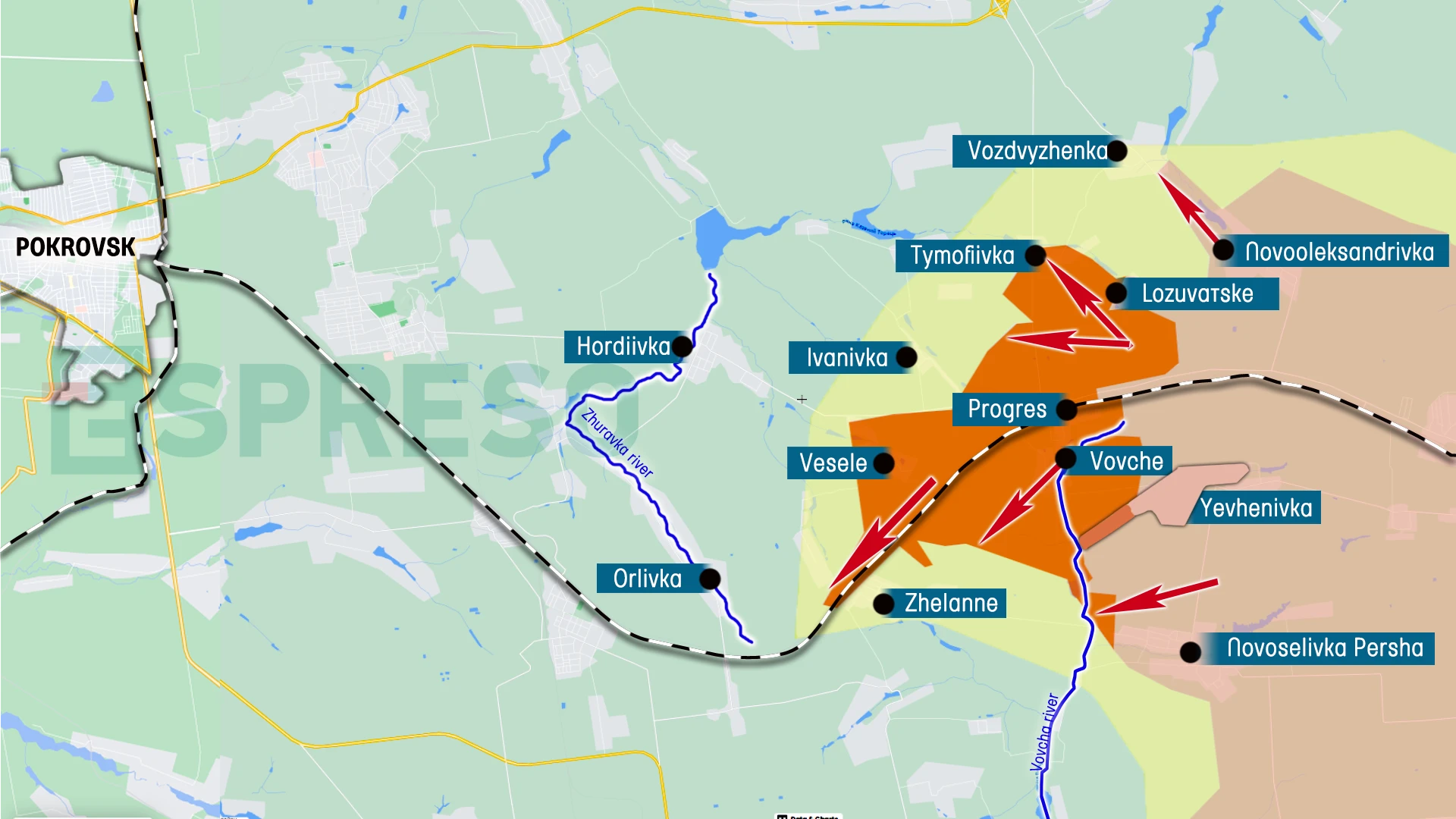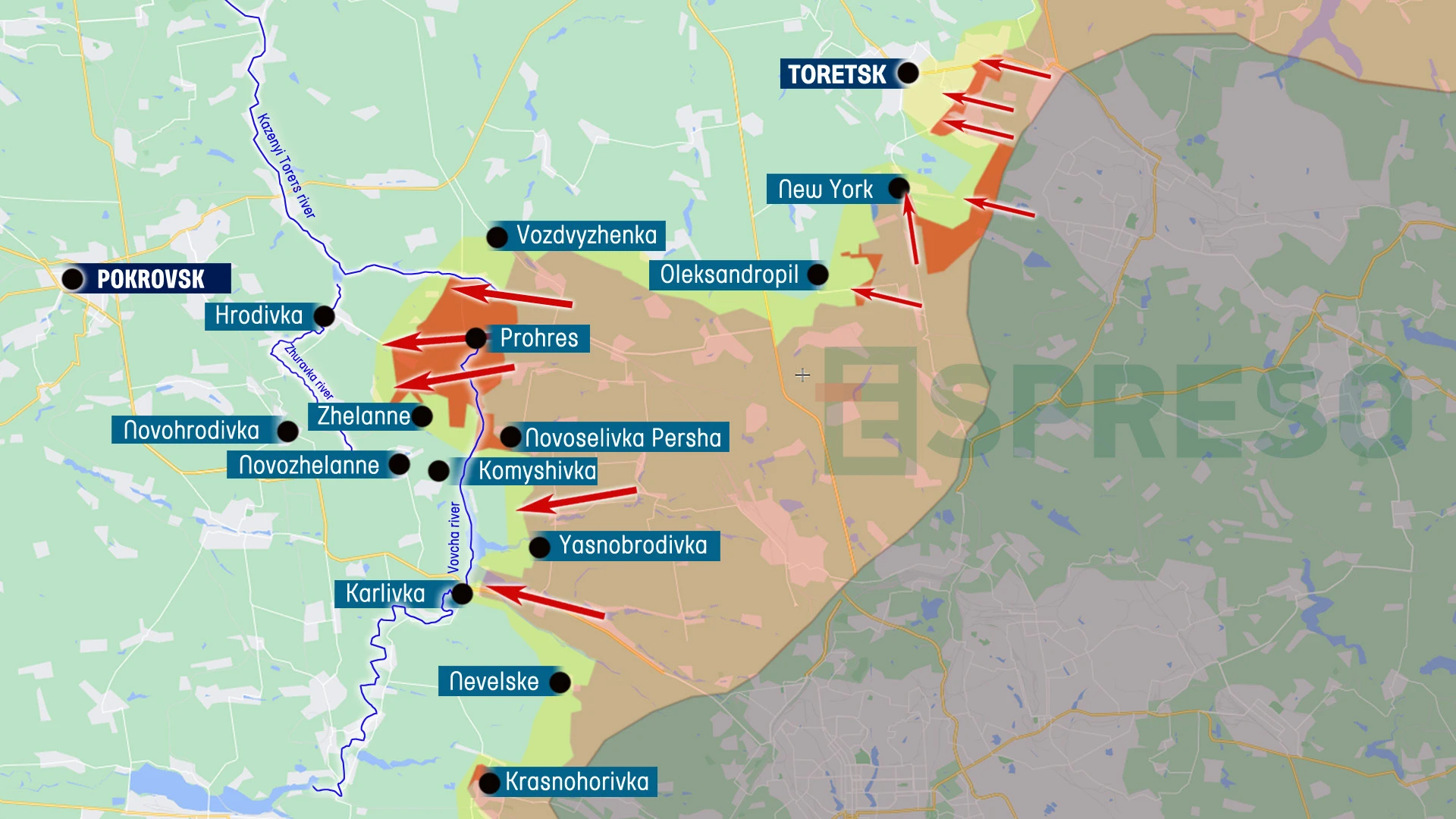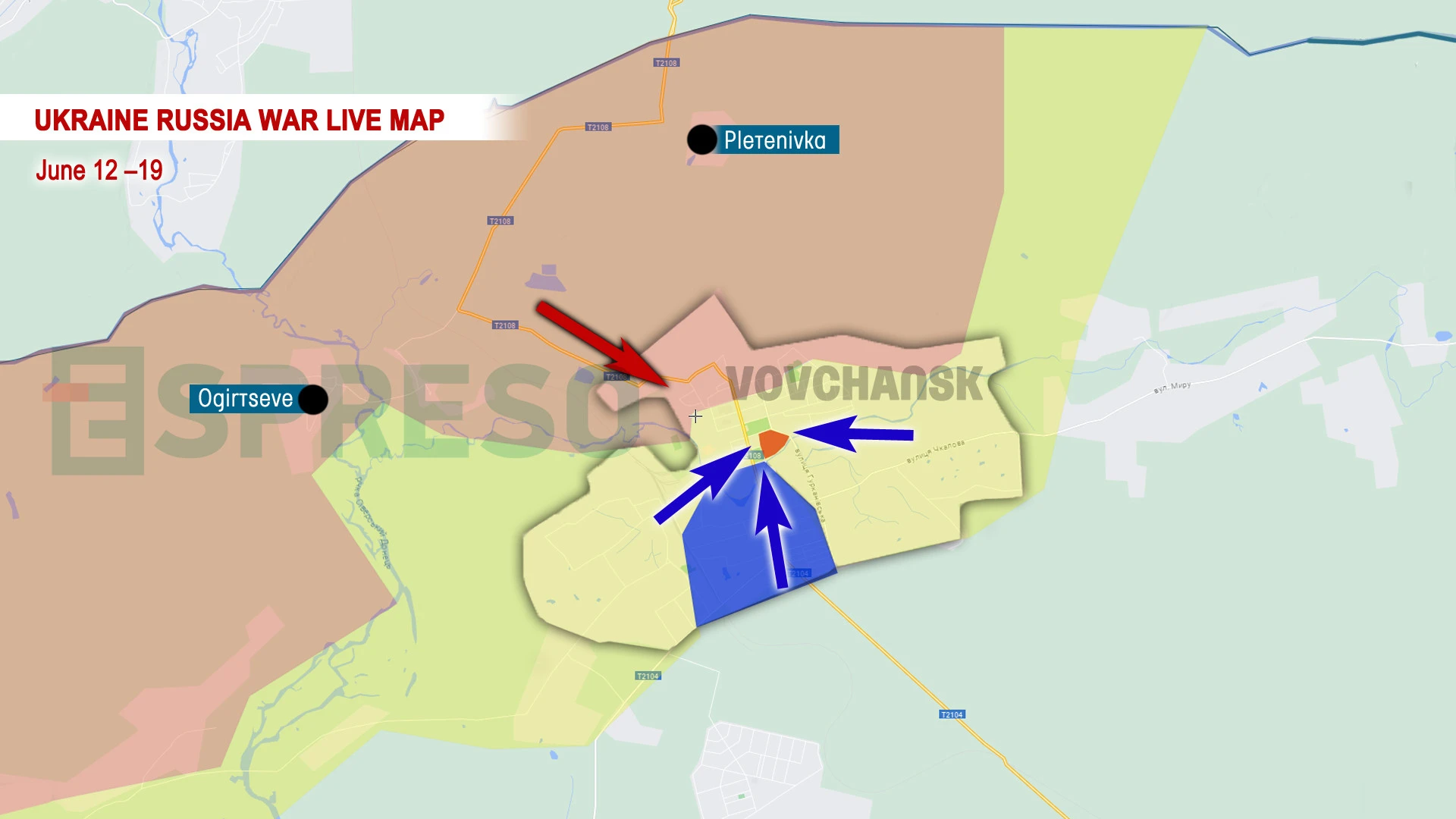
Russia shocked: global reactions pour in over Kursk region events. Serhiy Zgurets' column
Major Western outlets like the Wall Street Journal, the Economist, and Forbes are now covering the fighting in Russia's Kursk region and are using extremely positive terms to describe the Ukrainian military
Frontline situation
If we consider the reports from the Ukrainian Armed Forces' General Staff, the Russian troops are traditionally exerting the most pressure on two fronts: Pokrovsk and Toretsk. Specifically, on the Pokrovsk front, there were 40 combat clashes, which accounts for one-third of all combat clashes along the front line. The dynamics in these directions are quite clear. After capturing Ocheretyne and Prohres, Russia is attempting to advance further along the railway toward Novohrodivka and Hrodivka.

This is the defensive line that the Ukrainian Armed Forces will hold most actively, as all necessary conditions are in place there. Meanwhile, the invading Russian army will try to expand their advance along the flanks. We observe Russian troop movements toward Ivanivka, Vesele, and Zhelanne, which have been ongoing for the past two weeks. The dynamics are clear, although I would add that some of Ukrainian brigades have been redeployed to that direction. I hope this will stabilize the situation, despite the Russian army's advantage in manpower, equipment, and aviation.

Kursk direction
It is important to note that Russian forces have not yet redeployed their reserves and troops from this sector to the Kursk direction, which has been the main focus of both Ukrainian observers, citizens, the international community, and Western media since yesterday. It is particularly interesting that leading Western publications, such as the Wall Street Journal, the Economist, and Forbes, are beginning to describe the combat operations in the Kursk region and are giving extremely positive recognition to the actions of the Ukrainian Armed Forces, which is well-deserved. Simultaneously, new details are emerging about the Ukrainian military’s actions in the Kursk direction.
For example, Forbes reported that the Ukrainian Armed Forces executed a digital blitzkrieg. The article mentions that, using electronic warfare and drones on frequencies unfamiliar to Russian forces, the first phase of combat operations was ensured. When electronic warfare suppressed Russian detection systems, it rendered Russian drones blind. However, this is a simplified explanation of the situation in the Kursk region, as this was an extremely well-planned military operation involving Ukrainian mechanized and mobile units, as well as engineering and electronic warfare units.
Many factors have contributed to the dynamic development of the offensive operation in the Kursk region. It was a shock and a complete surprise to Russia. We are now in the next stage of this military operation. Currently, Russian forces have declared a counter-terrorist operation across three regions.
As of August 12, Putin was informed that 28 settlements are no longer under Russian control. However, DeepState analysts later reported that the actual number is over 40 settlements within this combat zone. The front's width is estimated to be around 35 kilometers, with a depth of 12, 15, or 30 kilometers, depending on various assessments, as there is no stable map of the situation. The dynamics of the situation in this sector are being assessed through video analysis.
Currently, the Ukrainian Armed Forces are advancing in three directions, with a fourth direction added to the east of the city of Sudzha. The main objective now is to expand the areas controlled by the Ukrainian Armed Forces. Russian troops are bringing in reserves, and several Russian units have been redeployed. I believe it is premature to comment on the dynamics themselves. We can say that the first phase was quite effective and dynamic, and now the Russian army is trying to halt the advance of the Ukrainian Armed Forces.
For Ukraine, it is crucial to choose a further strategy aimed at holding the positions that Ukrainian military leadership deems most advantageous. I believe that the most suitable defensive line is Rylsk - Korenevo - Sudzha. Ukrainian units are currently consolidating their positions along this line.
However, the Russian army is attempting to resist near Korenevo. Sudzha is fully under the control of the Ukrainian Armed Forces. There was a video showing Ukrainian armored personnel carriers already 30 kilometers east of this settlement. In other words, the dynamics are extremely important and significant, despite the panic currently happening in Russia.
Kharkiv direction
Equally important is how the operation in the Kursk direction has impacted other sectors of the front, as Russian forces began redeploying reserves to the Kursk region, including from the Belgorod region. Next, let's discuss how this affects the combat situation in the Kharkiv region.
Call sign Baikal, an officer with the 2nd Separate Unit of the Special Operations Center Omega, explained that the specialty of the Special Operations Center (SOC) units is that they act like a scalpel in this war, making precise cuts that help move towards victory. His unit is currently stationed on the Kharkiv front, where the situation is stabilized, controlled, with some dynamic movement of Ukrainian forces towards the border. It’s also worth noting that the opening of a new front line has reinvigorated and strengthened Ukraine's defenders, as the Russian aviation, particularly guided bombs, had been a significant obstacle to advancing.

As of yesterday, the number of guided bombs has significantly decreased because the Russian army has been forced to stretch and redeploy its reserves, resulting in a noticeable ease in pressure. However, there’s no room for complacency, and even more effort is needed when the opportunity arises.
The officer noted that Russian troops are trying to adapt, using some new maneuvers, but mostly it appears to be their old tactics — small group movements and "meat" assaults. Essentially, nothing particularly new has emerged, though there are some attempts to change or improve their approach, but with limited success. Regarding Russia's armored vehicles, a large number have been destroyed, leading Russian forces to use more mobile vehicles. They are deploying armored vehicles from the state border or Russian territory.
Baikal added that as of 2 days ago, Ukrainian artillery is operating more intensively than Russia's. As for FPV drones, there are so many that it’s difficult to immediately distinguish whose they are. The closer you get to the front line, the more constant the buzzing overhead, like a swarm of bees. We hope that Ukrainian drones outnumber Russian and that Ukrainian forces are using them more effectively. Night-vision drones are changing the course of events and forcing a shift in tactics.
The special forces officer noted that anyone who wants to join the SOC units must understand that it requires constant self-improvement every day. Joining the unit means becoming part of a family that will take care of you, and you must reciprocate. Specifically, anyone interested can visit Omega’s official Telegram channel or Facebook page, where they can fill out a form, after which someone will contact them and explain everything.
- News












































